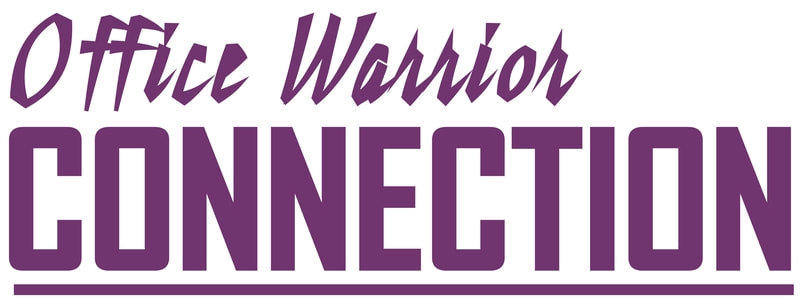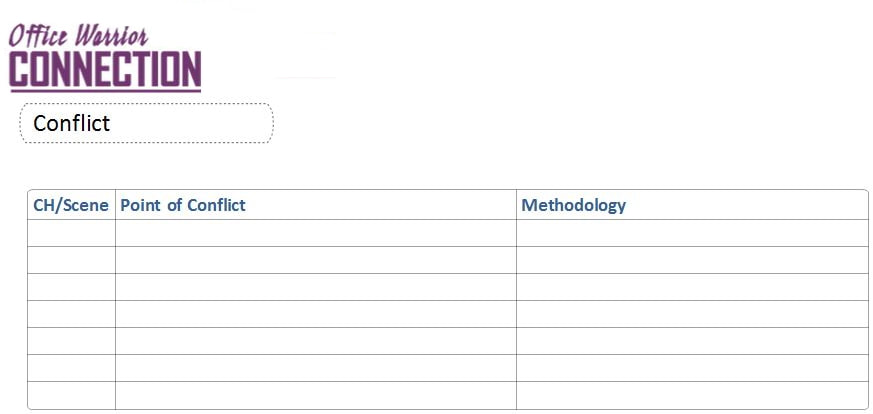|
5/3/2019 Day 7 - Outlining - Chapter ConflictChapter Conflict Without conflict, the character has nothing to drive them forward and the reader won't care about the character. If the reader doesn't care about the character, they don’t care about the book. Readers who don't care about the book won't leave a review, or worse, they will leave a negative review. So let's crank up the conflict in our stories and get those readers feeling bad for our characters! Conflict comes in many flavors, though generally when conflict is discussed in relation to the plot, it is speaking about the main character being up against something else. The something else can be another character, the character's self, nature, society, or something unnatural like fictional beasts, an omnipotent being, or technology. It is these conflicts that engage the character and by extension of that, engage the reader, so it is in the writer's best interest to make sure conflict is handled well in a story. Since variety is the spice of life, the conflict in our stories should be from all different sources and occur on different levels. Consider the difference between a slight disagreement to a full-out fistfight, or a dash through the rain compared to being stuck in a basement as a tornado sweeps through town. Remember too that all of our characters will handle stress, whether slight or severe in different ways, so where our main character might brush off a slight disagreement with their significant other, a disagreement with a coworker might be handled in a very different way. Finally, it's good to keep in mind that all these "little" confrontations will weigh on our characters in the same way they weigh on us. A couple of little things or even one big thing might be handled just fine, but if more and more start heaping on, we eventually reach a breaking point. The breaking point usually results in an emotional outburst of some sort (depending on the character), but the type of outburst can vary, again, depending on the character and the character's personality. Today's exercise will be about discovering all the points of conflict in our story, whether it is minor or major and indexing it so we can determine if we've heaped enough on our characters to reach the breaking point and get an emotional response from the reader. Today's Task
Days 3 - 7 are activities you can do in tandem with each other. Focus on understanding the steps you need to complete for today's outlining by working through Chapter One. As with the other outlines, today's process should be about creating today's worksheet and understanding how to use it rather than reading through the whole story and completing the outline as a single task. This is because you can read through each chapter and complete the various outlines all together and save yourself some time rather than reading through your story three or four times in a row. Remember, this is a fact-finding mission. You are analyzing what you actually wrote, not remembering off the top of your head what you intended to write. Exercise: Create a Conflict Worksheet If you are creating your notes in your OneNote Novel Editing notebook, follow these steps to complete the exercise:
Chapter Summary Parameters Chapter/Scene - Write in the chapter number or a short description of the chapter and scene. For shorthand notation, use C1S1 to represent Chapter 1 Scene 1. Point of Conflict - Provide a concise description of every conflict the main character runs into throughout your story. Every bit of aggravation should be listed, whether it's a thunderstorm, a bully, a burnt dinner, self-doubts, or a computer crash. If it gets in the way of the character's path to getting what they want, write it down. Methodology - Explain how the tension builds conflict for the character. Analysis of Conflict Once you have indexed all your points of conflict, you can analyze the stressors to see if you need to make any modifications. Review your list and ask yourself the following questions.
If you are working on Days 3 - 7 in conjunction with one another, you may have done enough today by creating your worksheets and reading chapter 1 five times in a row to get a good understanding of how you will be completing each worksheet to dig out the big plot holes. Try chapter 2 to make sure it all clicks if you need to. Day 8 will be how to find a flow to reading all the material of your novel and completing the worksheets all at once. It will give you a little more guidance on how to manage all the outlines while you read all your chapters. If you have time to begin reading more chapters after creating your Day 3 -7 outlines, go on and read Day 8. If creating your worksheets and working through Chapter 1 is all the time you have available for today, then read Day 8 when you are ready to get down to business. DOWNLOAD: Chapter Conflict Worksheet Template Instructions Tips for working by hand If you'd like to work on notepaper or set up your own table in your favorite application, include the columns listed above. The percentage listed is approximately the size you should make each column. If you are going to work by hand, don't draw the rows in until you start working and then add the rows as you complete each chapter. Next Steps If you've finished creating all the Outlining worksheets and have completed each of them for Chapter One of your book, you are ready to start the tedious process of reading and annotating. Read Day 7 for tips on preparing your workspace and using all the Outlining worksheets. Return to the Table of Contents Go to Day 8 - Find Your Flow Comments are closed.
|


 RSS Feed
RSS Feed
